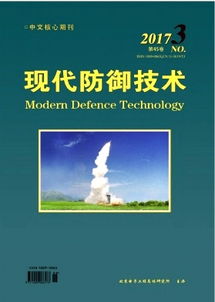```html
Modern Engineering and Technology Journals
Modern engineering and technology journals serve as vital repositories of the latest advancements, research findings, and insights within various engineering disciplines. These publications play a crucial role in disseminating knowledge, fostering innovation, and driving progress across industries. Let's delve into the significance of these journals and how they contribute to the advancement of engineering and technology.
Modern engineering and technology journals serve several pivotal purposes:
- Knowledge Dissemination: Journals act as platforms for researchers, academics, and industry professionals to share their discoveries, theories, and experimental findings with a global audience.
- Peer Review: Rigorous peer review processes ensure the quality and credibility of published research, maintaining high standards of academic integrity.
- Stay Updated: Engineers and technologists rely on journals to stay abreast of the latest trends, methodologies, and breakthroughs in their respective fields.
- Inspiration and Collaboration: Journals inspire new ideas, collaborations, and interdisciplinary research initiatives by showcasing innovative approaches and solutions.
- Academic Recognition: Publication in esteemed journals enhances the visibility and recognition of researchers, contributing to their professional growth and reputation.
For aspiring authors seeking to publish in modern engineering and technology journals, adherence to certain guidelines can significantly enhance the likelihood of acceptance:
- Originality: Ensure that your research presents novel insights, methodologies, or applications that contribute to the advancement of knowledge in your field.
- Clarity and Precision: Communicate your ideas effectively, using clear, concise language and precise technical terminology. Structure your paper logically, with welldefined sections for introduction, methodology, results, discussion, and conclusion.
- Thoroughness: Conduct comprehensive literature reviews to situate your research within the broader context of existing scholarship. Clearly articulate the significance and potential impact of your findings.
- Methodological Rigor: Employ robust research methodologies and statistical analyses to ensure the validity and reliability of your results. Transparently report any limitations or potential biases in your study.
- Ethical Considerations: Adhere to ethical guidelines and standards of conduct in research, including obtaining appropriate permissions, disclosing conflicts of interest, and ensuring the welfare of human subjects, if applicable.
- Formatting and Citation Style: Follow the journal's specific formatting guidelines and citation style meticulously. Pay close attention to requirements regarding referencing, figure/table formatting, and manuscript length.
- Peer Review Response: Thoughtfully address feedback from peer reviewers, revising your manuscript accordingly to address any concerns or suggestions raised during the review process.
Several prominent journals cater to diverse engineering and technology disciplines, serving as authoritative sources of cuttingedge research and scholarship. Some notable examples include:
- IEEE Transactions on Engineering Management: Focuses on the management and leadership aspects of engineering organizations and projects.
- Journal of Mechanical Engineering Science: Covers a wide range of topics in mechanical engineering, including fluid mechanics, thermodynamics, and materials science.
- ComputerAided Civil and Infrastructure Engineering: Publishes research on computational methods and tools for civil and infrastructure engineering applications.
- Materials & Design: Explores innovative materials design and engineering solutions across various industries, from aerospace to biomedical engineering.
- Journal of Renewable and Sustainable Energy: Focuses on research related to renewable energy technologies, sustainability, and energy policy.
Modern engineering and technology journals play a pivotal role in advancing knowledge, fostering innovation, and driving progress across diverse industries. By adhering to rigorous standards of quality and integrity, authors can contribute to these journals' mission of disseminating cuttingedge research and facilitating interdisciplinary collaboration. As readers, staying engaged with the latest publications enables professionals to remain at the forefront of their fields, driving continuous improvement and innovation in engineering and technology.

